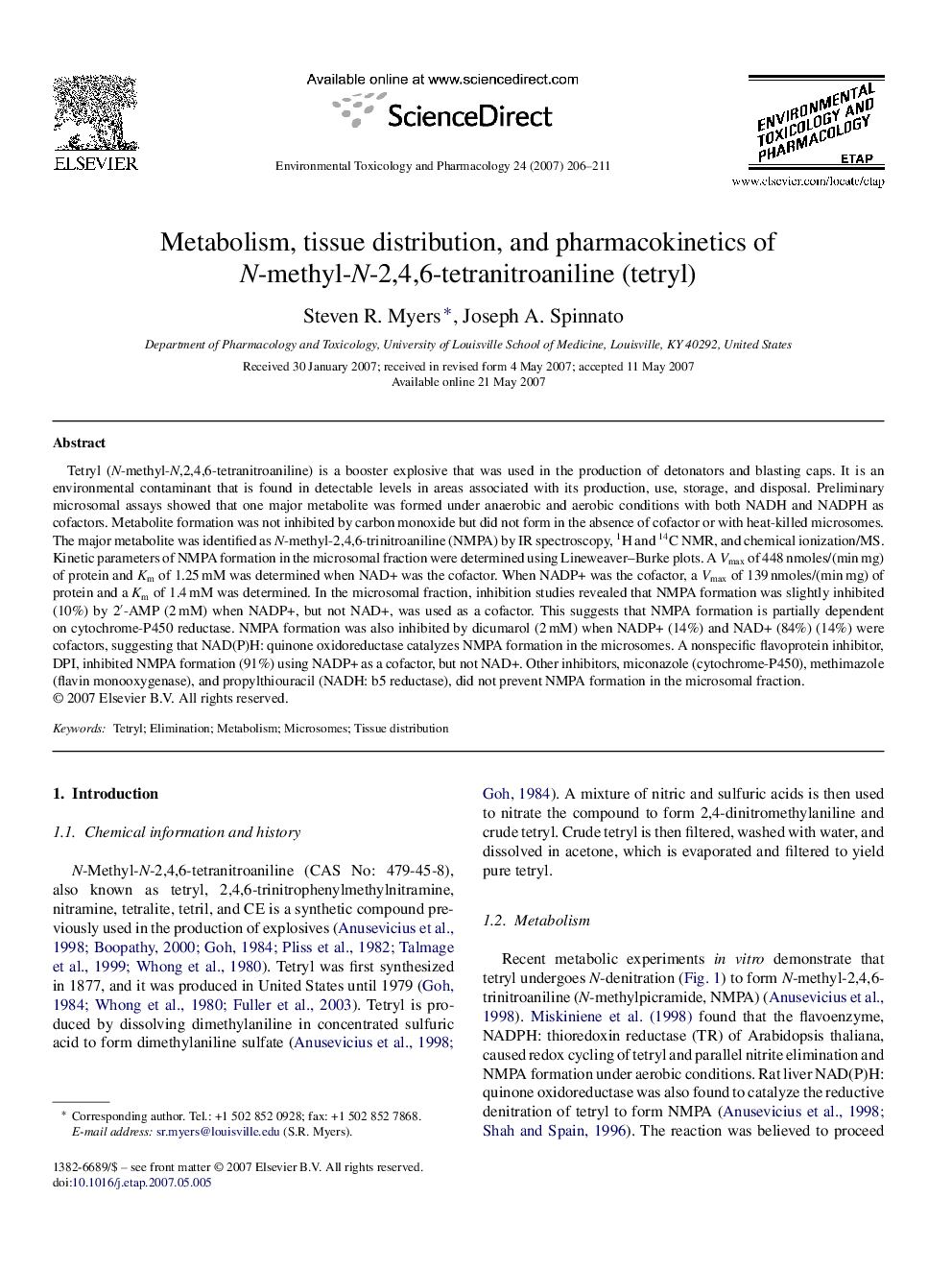| Article ID | Journal | Published Year | Pages | File Type |
|---|---|---|---|---|
| 2584471 | Environmental Toxicology and Pharmacology | 2007 | 6 Pages |
Abstract
Tetryl (N-methyl-N,2,4,6-tetranitroaniline) is a booster explosive that was used in the production of detonators and blasting caps. It is an environmental contaminant that is found in detectable levels in areas associated with its production, use, storage, and disposal. Preliminary microsomal assays showed that one major metabolite was formed under anaerobic and aerobic conditions with both NADH and NADPH as cofactors. Metabolite formation was not inhibited by carbon monoxide but did not form in the absence of cofactor or with heat-killed microsomes. The major metabolite was identified as N-methyl-2,4,6-trinitroaniline (NMPA) by IR spectroscopy, 1H and 14C NMR, and chemical ionization/MS. Kinetic parameters of NMPA formation in the microsomal fraction were determined using Lineweaver-Burke plots. A Vmax of 448 nmoles/(min mg) of protein and Km of 1.25 mM was determined when NAD+ was the cofactor. When NADP+ was the cofactor, a Vmax of 139 nmoles/(min mg) of protein and a Km of 1.4 mM was determined. In the microsomal fraction, inhibition studies revealed that NMPA formation was slightly inhibited (10%) by 2â²-AMP (2 mM) when NADP+, but not NAD+, was used as a cofactor. This suggests that NMPA formation is partially dependent on cytochrome-P450 reductase. NMPA formation was also inhibited by dicumarol (2 mM) when NADP+ (14%) and NAD+ (84%) (14%) were cofactors, suggesting that NAD(P)H: quinone oxidoreductase catalyzes NMPA formation in the microsomes. A nonspecific flavoprotein inhibitor, DPI, inhibited NMPA formation (91%) using NADP+ as a cofactor, but not NAD+. Other inhibitors, miconazole (cytochrome-P450), methimazole (flavin monooxygenase), and propylthiouracil (NADH: b5 reductase), did not prevent NMPA formation in the microsomal fraction.
Related Topics
Life Sciences
Environmental Science
Health, Toxicology and Mutagenesis
Authors
Steven R. Myers, Joseph A. Spinnato,
